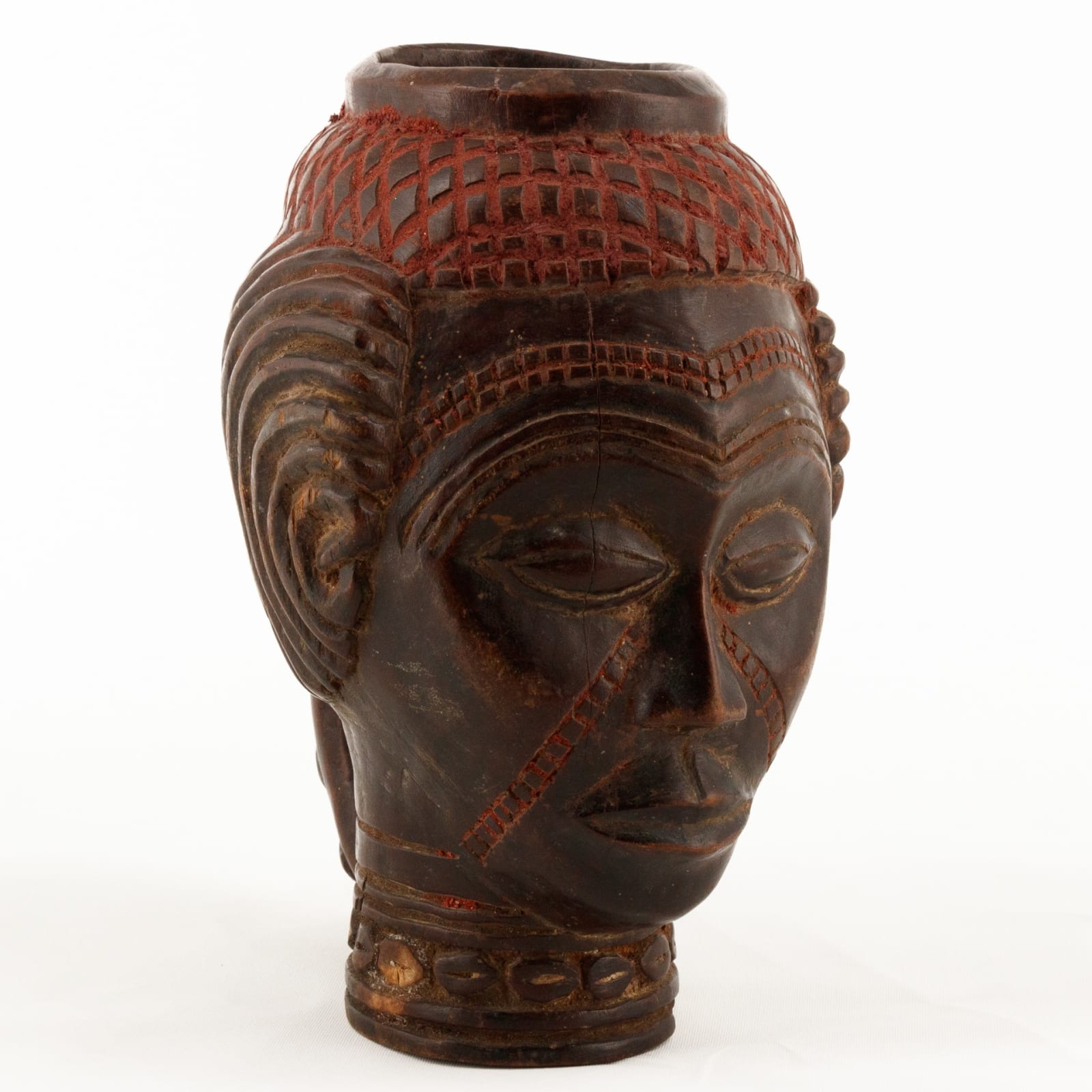Kuba Palm Wine Cup, 20th century CE
Wood
height 20.5 cm
height 8 1/8 in
height 8 1/8 in
ES.3769.23
The Kuba Kingdom, also known as the Kingdom of the Bakuba, is a conglomerate of several smaller chiefdoms which was formed in the 17th century in the centre of what...
The Kuba Kingdom, also known as the Kingdom of the Bakuba, is a conglomerate of several smaller chiefdoms which was formed in the 17th century in the centre of what is now the Democratic Republic of the Congo. It reached its peak during the 19th century, before the arrival of Europeans to the area (although it still exists today). It was founded in 1625 by Shyaam a-Mbul a Ngoong, who came from outside the area and united several principalities under his leadership. The government was controlled by a king (nyim) who attended a court council with representatives from all of the Kuba subgroups. As well as elected political offices, the kingdom also had a judicial system, taxation, a police force, and a military. It gained wealth through the adoption of advanced techniques from neighbouring peoples, as well as the cultivation of New World crops such as maize and tobacco. The wealth of the kingdom allowed for the development of a distinctive artistic tradition because of the desire of the elites to commission artworks that could display their power. Types of objects frequently seen include embroidered raffia textiles, headdresses, masks, ndop (sculptures representing Kuba kings), cosmetic boxes, and carved palm wine drinking cups. Palm wine, made from the sap of palm trees, is a popular beverage among the Kuba people. Highly decorated vessels became common as a way for elite individuals to compete with each other, as offering wine to friends in an impressive cup was a way of showing their wealth and status.
This cup takes the form of a human head, with a handle connected at the base of the neck and the middle of the back of the head, which is decorated with a twisted rope pattern. The face wears a solemn expression, with a straight mouth, downcast gaze, and slightly raised eyebrows. There are lines of squares stretching diagonally across the cheeks and in an arch across the forehead, which probably represent the results of scarification. Each ear is surrounded by concentric curved lines. The texture of the hair at the top and back of the head is represented by a cross-hatched pattern. Within the lines of the scarification and cross-hatched marks, traces of red pigment can be seen. Tukula, or twool, is a red powder made of ground wood which the Kuba people used to decorate their skin for ceremonies and to dye cloth, because the red colour was associated with beauty. The addition of red colouring to this vessel could therefore have been a way to add to its prestige and aesthetic appeal. There is a line of carved shell shapes around the neck. A small rim around the hole in the top of the head allows for the cup to be functional as a drinking vessel.
This cup takes the form of a human head, with a handle connected at the base of the neck and the middle of the back of the head, which is decorated with a twisted rope pattern. The face wears a solemn expression, with a straight mouth, downcast gaze, and slightly raised eyebrows. There are lines of squares stretching diagonally across the cheeks and in an arch across the forehead, which probably represent the results of scarification. Each ear is surrounded by concentric curved lines. The texture of the hair at the top and back of the head is represented by a cross-hatched pattern. Within the lines of the scarification and cross-hatched marks, traces of red pigment can be seen. Tukula, or twool, is a red powder made of ground wood which the Kuba people used to decorate their skin for ceremonies and to dye cloth, because the red colour was associated with beauty. The addition of red colouring to this vessel could therefore have been a way to add to its prestige and aesthetic appeal. There is a line of carved shell shapes around the neck. A small rim around the hole in the top of the head allows for the cup to be functional as a drinking vessel.
